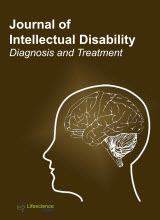jiddt
|
|
Abstract: Objective: The purpose of this article is to analyse consumers' psychological perception of antibacterial drugs use (ABD). For this purpose, the authors conducted a study in the form of a survey among patients, doctors and pharmacists. Keywords: Antibiotics, treatment, prescription drugs, drug prescription, free purchase of antibiotics.
|
|
|
Abstract: Professional activity of managers, entrepreneurs and other persons who often enter into negotiations implies high density of difficulties and problem situations. This study explored whether social and psychological peculiarities of personality preferred negotiating styles and response to ambiguity may be determinants of productive coping behaviour. The authors surveyed 105 managers of medium and large-sized business aged from 23 to 59. The average age of the respondents is 35.37 years. The study measured an adaptive level of coping strategies by E. Heim's Coping Questionnaire, peculiarities of personality by 5PFQ P. Costa and R. McCrae, preferred negotiating styles and response to ambiguity. Results suggested that adaptive coping strategies more frequently used by less anxious, emotionally healthy managers who in dealing with colleagues and subordinates show respect, willingness to understand and accept the other's point of view, comparative to non-adaptive or relatively adaptive coping strategies using managers with high anxiety, emotional instability and less developed communication skills. It was found the correlation between preferences of the negotiation styles and personality characteristics of respondents. Managers who use adaptive behavioural coping techniques in socially significant and stressful situations are characterized by a higher degree of respect for the people around them (p<0.001), greater emotional relaxation (p<0.001). These social and psychological characteristics may be considered as the determinants of a person's use of adaptive coping ways under challenging situations and more or less serve as a guarantee for their successful overcoming. Keywords: Negotiations, negotiating styles, coping strategies, managers, personality characteristics.
|
|
|
Abstract: The article deals with the organization of career guidance for individuals with special educational needs in the Republic of Kazakhstan. This paper considers the professional orientation of young people with disabilities based on the theoretical analysis of the current state of career guidance organization. The authors pay special attention to the problem of effective career guidance activities, which largely depend on the comprehensive and consistent nature of these activities and involve all the aspects of the educational process. Keywords: Career guidance, vocational education, employment, youth with special educational needs.
|
|
|
Abstract: The purpose of the study was to identify the specifics of creativity in student age and the peculiarities of socio-psychological adaptation in a politically and economically unstable environment, as well as gender and micro group patterns of the relationship between creativity and adaptability. The methods such as the Guilford-Torrance method, “Desire for creativity” Scale, Kettell test, Methods of Moreno sociometry, Leary’s method, and Dembo-Rubinstein method were used to monitor the variables. The study identified that non-verbal creativity develops in individuals aged 16-17 years. The creative attitude to life develops in the ones aged 17-18. At the age of 18-19, creativity becomes the most integrated into the system of personal characteristics are motivational and personal components of creativity, which form positive connections with the fundamental adaptive personality characteristics, which indicates a greater adaptive resource of creatively oriented individuals. It was also found that boys, compared to girls, were more prone to leadership, more persistent, assertive (E), more emotionally stable (C), calm (O), and also more independent (Q2). Girls were more likely to feel guilty, anxious (O), more sociable, open (A), sensitive, and vulnerable (I). The study found that students with a high level of development of divergent thinking and its components (cognitive factors of creativity) carry out interpersonal communication (as a component of adaptation) most flexibly and effectively making students less prone to depersonalisation and reducing the risk of emotional exhaustion and maladaptation. Keywords: Creativity, adaptation resource, age, and gender features, environment.
|
|
|
Abstract: Background: Autism spectrum disorder (ASD) continues to rise at an astonishing rate. As many schools attempt to create an inclusive environment conducive for students with autism to support academic success, we must recognize the teacher's role in creating an inclusive classroom. Using a student-specific teaching self-efficacy measure might provide more useful information for supporting teachers' beliefs for teaching students with ASD. Teachers with high self-efficacy have a positive impact on student achievement. The purpose of this investigation was to develop an instrument that can be used to measure teachers’ self-efficacy for effectively working with students with ASD. The original version of the scale was translated and back-translated into Persian, followed by a pilot study. A sample (n=633) of university students was recruited. Results indicated that the scale represented a unidimensional construct with acceptable internal consistency. Exploratory factor analysis demonstrated the unidimensionality of the TSE-ASD. The maximum likelihood confirmatory for the 12-item TSE-ASD model indicated excellent model fit indices (χ2/df=2.60, CFI=0.956, SRMR=0.049, PCLOSE >0.05, RMSEA=0.062, 90% CI [0.052, 0.082]). As for criterion-related validity, The Pearson correlation coefficients between (TSE-ASD score) and self-regulation (r= 0.72, p<0.01) revealed a large correlation and linear regression indicating that TSE-ASD significantly predicted self-regulation, b = 0.69, p < 0.001. Using a student-specific teaching self-efficacy measure might provide more useful information for supporting teachers' beliefs for teaching students with ASD. The findings provide evidence that TSE-ASD is a reliable and valid instrument for assessing teacher self-efficacy for teaching students with Autism Spectrum Disorder in educational settings among Persian speaking individuals. Keywords: Autism, Inclusive Education, Self-Efficacy, Validation, Intellectual Disability.
|


